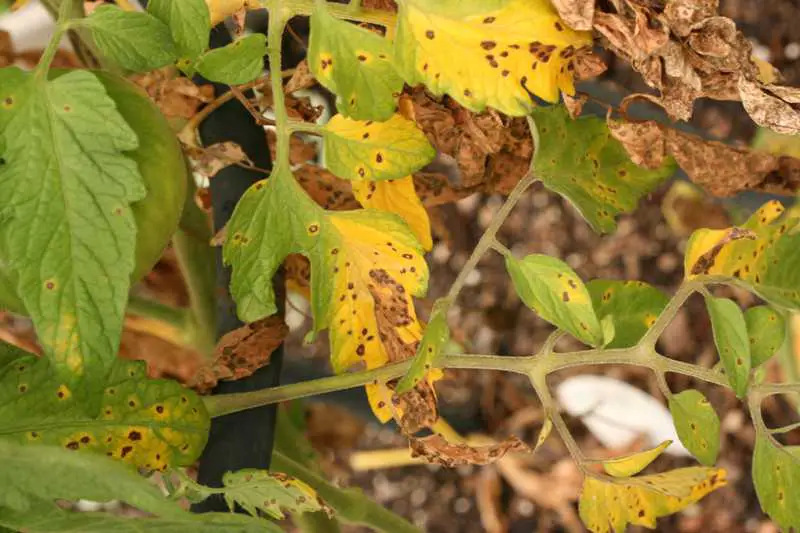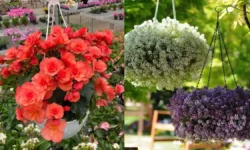Tomato plants are among the most popular and rewarding crops grown in home gardens. However, one common issue many gardeners face is the appearance of yellow leaves on tomato plants. Yellowing leaves can be a sign of various underlying problems, ranging from nutrient deficiencies to pests and diseases. Understanding why tomato leaves turn yellow is crucial for taking timely action and ensuring a healthy, productive harvest.
In this article, we will explore the main causes of yellow leaves on tomato plants, how to diagnose the problem correctly, and effective solutions to restore your plants’ health. We will also discuss preventative measures to keep your tomato plants thriving throughout the growing season.
Table of Contents
Understanding Leaf Yellowing in Tomato Plants

What Does Yellowing Mean?
Yellow leaves on tomato plants, scientifically known as chlorosis, indicate a loss of chlorophyll—the pigment responsible for the green color and photosynthesis. Without sufficient chlorophyll, the plant cannot effectively produce the energy needed for growth and fruit development. Yellowing may start on older leaves or new growth, depending on the cause, and its pattern can provide valuable clues for diagnosis.
Leaf yellowing is not a disease itself but a symptom of various issues affecting the plant’s health. Determining whether the yellowing is uniform, spotted, or accompanied by other symptoms is key to understanding the root cause.
The Importance of Early Detection
Promptly recognizing yellow leaves can help prevent further damage and yield loss. Left untreated, the underlying causes of yellowing may weaken the tomato plant, reduce fruit size and quantity, and even lead to plant death in severe cases. Gardeners should monitor their plants regularly, especially during hot, dry weather or after fertilization changes.
Common Causes of Yellow Leaves on Tomato Plants
Nutrient Deficiencies
Nutrient imbalances are among the most frequent causes of yellow leaves in tomatoes. Each essential nutrient plays a specific role in plant growth, and deficiencies manifest as different yellowing patterns.
Nitrogen deficiency typically causes older leaves to turn pale or yellow first because nitrogen is mobile within the plant and gets relocated to new growth. Phosphorus and potassium deficiencies can also affect leaf color and overall plant vigor.
Iron deficiency results in interveinal chlorosis, where leaf veins remain green but the tissue between them turns yellow, mostly affecting new leaves. Magnesium deficiency leads to yellowing starting at the leaf edges, progressing inward.
Watering Issues
Both overwatering and underwatering can cause yellow leaves on tomato plants. Overwatering suffocates roots, limiting oxygen availability and causing root rot, which impairs nutrient uptake. This stress often shows as yellowing on lower leaves.
Underwatering causes drought stress, limiting photosynthesis and nutrient transport, resulting in yellow and wilted leaves. The balance of watering is critical; tomato plants need consistent moisture but well-drained soil.
Pests and Diseases
Tomato plants are susceptible to a range of pests and diseases that cause yellowing leaves.
Spider mites suck sap from the leaves, causing yellow speckling and eventual leaf drop. Aphids transmit viruses and cause distorted, yellow leaves. Whiteflies and leaf miners can also contribute to chlorosis.
Fungal diseases such as early blight and septoria leaf spot begin with yellowing spots on older leaves, often bordered with dark lesions. Bacterial wilt and fusarium wilt block water transport, causing sudden yellowing and wilting.
Environmental Stresses
Environmental factors like excessive heat, cold, or wind can stress tomato plants, resulting in yellow leaves. Sudden temperature drops may cause damage to young leaves, while prolonged heat stress can cause leaf scorch and chlorosis.
Poor soil drainage or compaction limits root growth and nutrient absorption. Excessive fertilizer, especially nitrogen, may lead to lush green growth but thin fruit and eventual yellowing due to nutrient imbalance.
How to Diagnose the Cause of Yellow Leaves
Observing Leaf Patterns and Plant Behavior
Careful observation is essential for diagnosing yellow leaves on tomato plants. Noting which leaves are affected first (old vs. new), the pattern of yellowing (uniform, spotted, interveinal), and presence of other symptoms (wilting, spots, pests) can narrow down potential causes.
Examining the soil moisture, recent weather conditions, and fertilization schedule can provide further clues. Taking a sample of the affected leaves to a local extension office or nursery may also help confirm the diagnosis.
Soil and Tissue Testing
Testing soil nutrient levels and plant tissue analysis can identify specific deficiencies or toxicities. A balanced soil pH between 6.0 and 6.8 is ideal for tomato nutrient uptake. Soil that is too acidic or alkaline can cause nutrient lockout, leading to yellow leaves despite adequate fertilization.
Effective Solutions to Yellow Leaves on Tomato Plants
Correcting Nutrient Deficiencies
Once the deficient nutrient is identified, appropriate fertilizers or soil amendments can be applied. For nitrogen deficiency, side-dressing with a nitrogen-rich fertilizer or organic sources such as compost or fish emulsion can help.
For iron or magnesium deficiencies, foliar sprays of chelated iron or Epsom salts may provide quick relief. Adjusting soil pH can also improve nutrient availability.
Adjusting Watering Practices
Ensuring proper watering is crucial. Tomato plants prefer deep, infrequent watering that encourages deep root growth. Mulching around the base helps retain soil moisture and regulate temperature.
Avoid waterlogging by improving soil drainage or planting in raised beds. Use drip irrigation or soaker hoses to provide consistent moisture without wetting foliage, which can reduce disease risk.
Managing Pests and Diseases
Implementing integrated pest management (IPM) strategies helps control pests causing yellow leaves. Introducing beneficial insects, using insecticidal soaps, or neem oil can reduce pest populations.
For fungal diseases, removing infected leaves, practicing crop rotation, and applying appropriate fungicides can minimize spread. Ensuring good airflow and avoiding overhead watering reduce disease incidence.
Mitigating Environmental Stress
Providing shade during extreme heat and protecting plants from strong winds can reduce stress. Improving soil structure with organic matter increases resilience. Avoid excessive fertilization and monitor soil conditions regularly.
Preventative Measures to Keep Tomato Plants Healthy
Choosing Resistant Varieties
Selecting tomato varieties resistant to common diseases reduces the risk of yellow leaves caused by pathogens. Heirloom and hybrid varieties vary in susceptibility, so choose based on your local climate and disease pressures.
Proper Plant Spacing and Pruning
Adequate spacing ensures good airflow, reducing humidity and fungal growth. Pruning lower leaves and suckers improves light penetration and plant vigor, preventing yellowing from disease.
Regular Monitoring and Maintenance
Consistent monitoring for early signs of yellowing or pests allows for timely intervention. Keeping garden tools clean and rotating crops yearly helps prevent soil-borne diseases.
FAQs about Yellow Leaves on Tomato Plants
Why are the leaves on my tomato plants turning yellow?
Yellow leaves on tomato plants can result from nutrient deficiencies, improper watering, pest infestations, diseases, or environmental stress. Identifying the specific cause is key to effective treatment.
How can I fix yellow leaves caused by nutrient deficiencies?
Correcting nutrient deficiencies involves applying appropriate fertilizers, adjusting soil pH, and sometimes using foliar sprays like chelated iron or Epsom salts for quicker results.
Can overwatering cause yellow leaves on tomato plants?
Yes, overwatering can suffocate roots, leading to root rot and poor nutrient uptake, which often manifests as yellowing leaves.
Are pests responsible for yellowing leaves on tomatoes?
Certain pests such as aphids, spider mites, and whiteflies can cause damage that results in yellow leaves. Managing these pests promptly helps prevent further damage.
How do I prevent yellow leaves on my tomato plants?
Preventative measures include choosing disease-resistant varieties, proper watering, maintaining good soil health, pruning for airflow, and regular monitoring for early signs of stress or pests.
Conclusion: Keeping Your Tomato Plants Vibrant and Productive
Yellow leaves on tomato plants signal an underlying issue that, if addressed early, can be reversed to maintain plant health and fruit quality. Whether caused by nutrient imbalances, watering mistakes, pests, diseases, or environmental stress, recognizing the symptoms and responding promptly is essential.
By understanding the causes, practicing good gardening habits, and applying the appropriate remedies, you can enjoy a bountiful harvest of healthy, flavorful tomatoes. Remember, vigilance and proactive care are the keys to thriving tomato plants with vibrant green leaves and delicious fruit.






